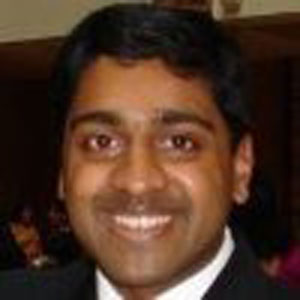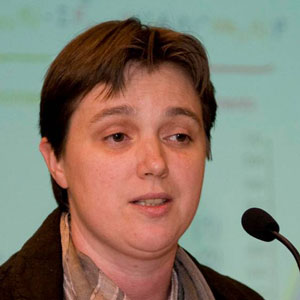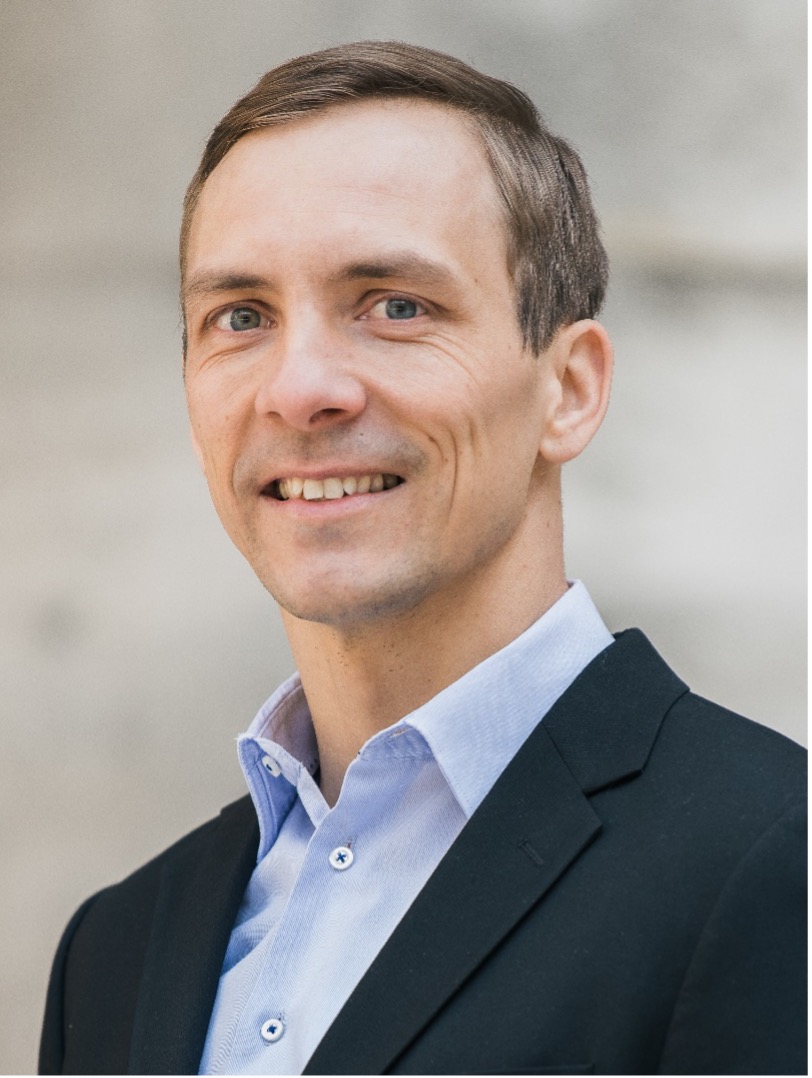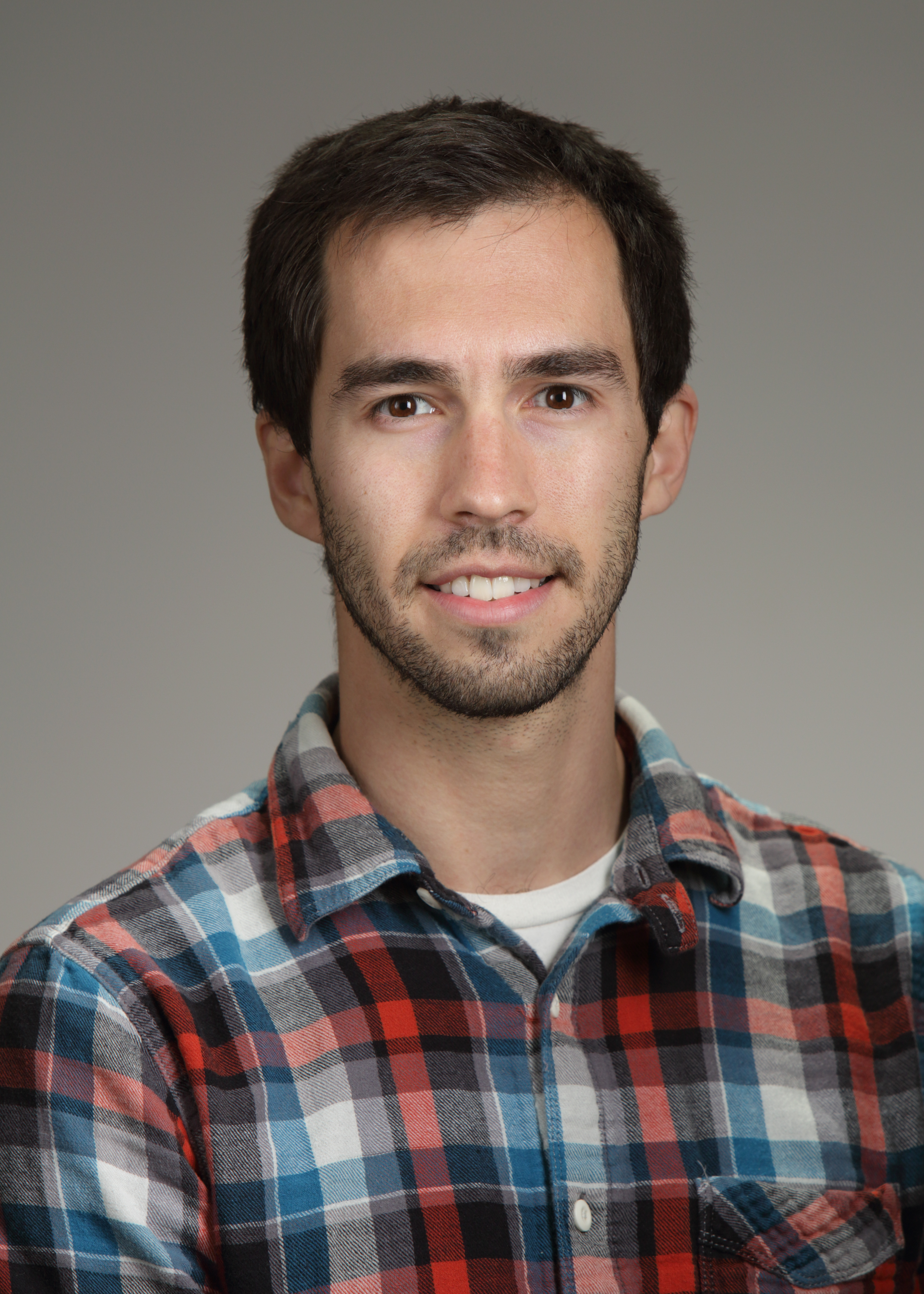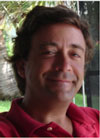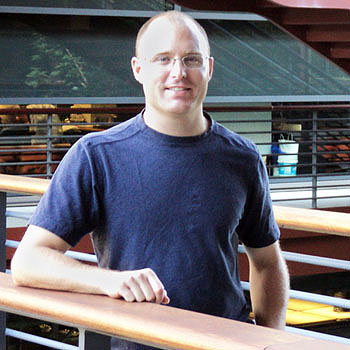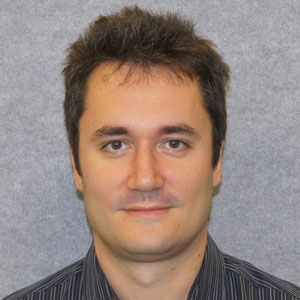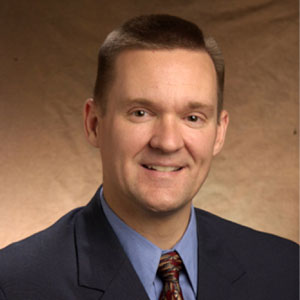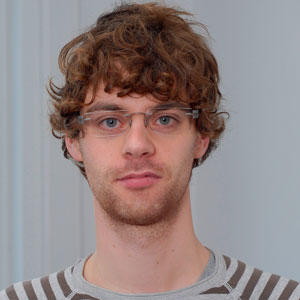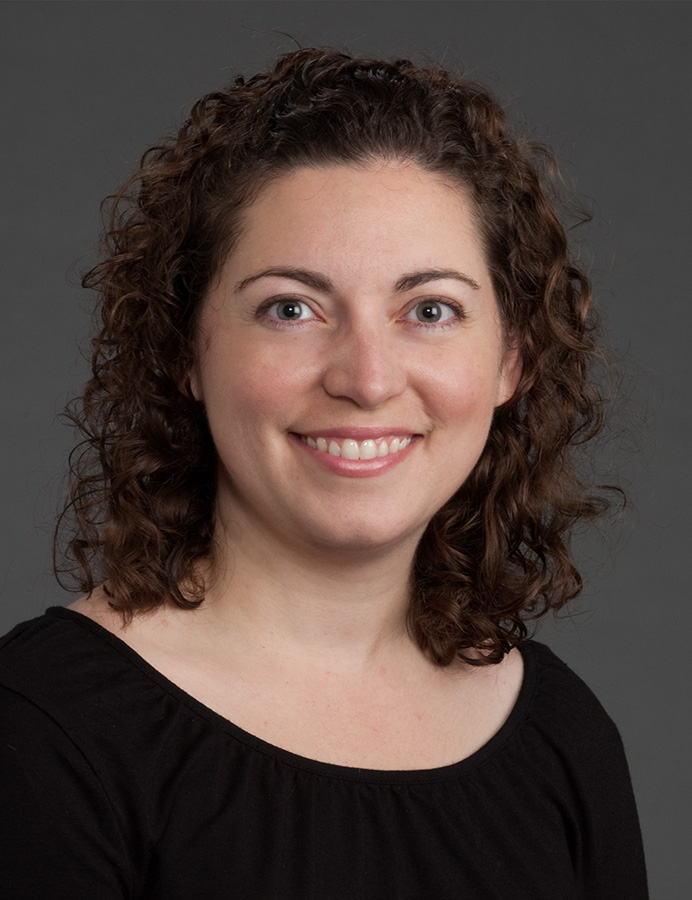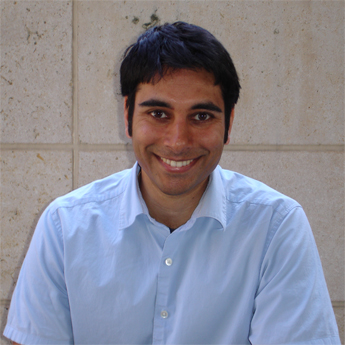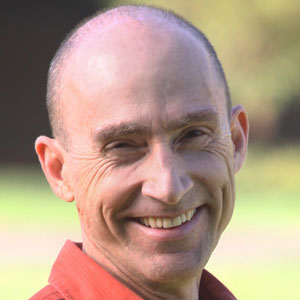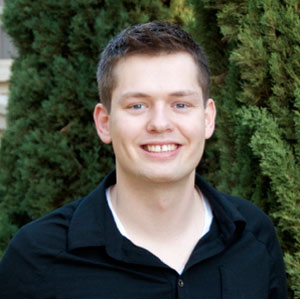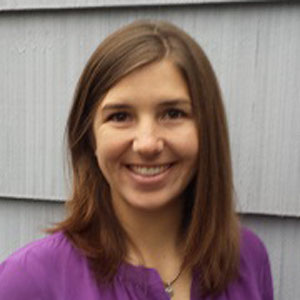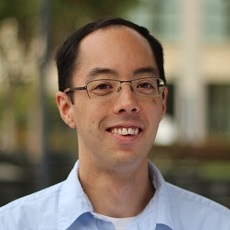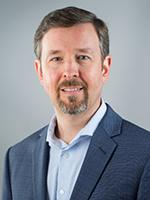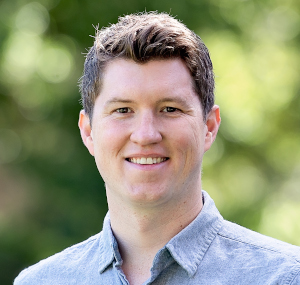| Dennis Anderson, Ph.D.Assistant Professor of Orthopedic Surgery
Department of Orthopedic Surgery, Harvard Medical School
Center for Advanced Orthopaedic Studies, Beth Israel Deaconess Medical Center
Personal Website
danders7@bidmc.harvard.edu Modeling of the thoracolumbar spine; person-specific modeling; applications to clinical problems and populations Full Bio and Expertise BiographyDr. Anderson received his Ph.D. in Engineering Mechanics from Virginia Tech in 2010, with a focus on aging and gait biomechanics. He then began a postdoctoral fellowship at the Center for Advanced Orthopaedic Studies at Beth Israel Deaconess Medical Center and Harvard Medical School, studying the biomechanics of vertebral fractures in older adults. In 2013 he was awarded a K99/R00 Pathway to Independence award from the NIH to continue studies of aging and spine biomechanics, and he was appointed Assistant Professor of Orthopaedic Surgery at Harvard Medical School in 2015. His lab continues to study how aging and disease affect spine biomechanics, with an interest in clinical applications of motion analysis and musculoskeletal modeling. ExpertiseDr. Anderson has broad expertise in developing and applying musculoskeleltal modeling to evaluate spine motion and loading. He has expertise in developing and validating novel musculoskeletal models of the thoracolumbar spine, creation of subject-specific models based on a variety of inputs (including medical imaging), and application of musculoskeletal modeling in large datasets. His team regularly uses the OpenSim API via Matlab to establish workflows for model creation, motion analysis, and optimization, and moreover has implemented these on a high-performance compute cluster (Linux based) to enable higher throughput in dynamic analyses. |
| Ravi Balasubramanian, Ph.D.Director, Robotics and Human Control Systems Laboratory
School of Mechanical, Industrial, and Manufacturing Engineering
Oregon State University
Personal Website
ravi.balasubramanian@oregonstate.edu Simulation of robotic systems and their interface with humans Full Bio and Expertise BiographyDr. Ravi Balasubramanian is an Assistant Professor in Mechanical Engineering at Oregon State University, where he directs the work in the Robotics and Human Control Systems Laboratory. He received his undergraduate degree in Mechanical Engineering from the National University of Singapore with top honors andhisPhDfromthe Robotics Institute at Carnegie Mellon University in 2006. He did a post-doctoral fellowship at the University of Washington in the emerging area of neurobotics, focusing on identifying the principles of human learning and execution in physical interaction tasks. He then was a research scientistinYale University developing novel mechanisms for robotic hands. He has received several awards including the Best Student Paper finalist award at the International Conference on Robotics and Automation in 2004 and the Outstanding Researcher Award from the NIH National Center for Simulation in Rehabilitation Research in 2012. He co-edited the Springer book titled “The Human Hand as an Inspiration for Robot Hand Development.” ExpertiseThe key principle behind Dr. Balasubramanian's work is to simultaneously draw inspiration from the human control system to advance robotic systems and to use robotic systems to develop a deeper understanding of the human body and improve quality of life. To this end, his group explores methods to advance robotic grasping and manipulation by incorporating human expertise as well as develop implantable robotic mechanisms for advancing hand surgery. Dr. Balasubramanian has extensive software and hardware experience in the modeling, construction, and validation of mechanical systems (mobile robots and robot hands) as well as devices (electromyography, human-robot interfaces) that interface with neuro-biomechanical systems. He seeks to advance OpenSim’s features for analyzing human hand function in physical interaction tasks. |
| Dimitra Blana, PhDLecturer in Health Data Science
Aberdeen Centre for Health Data Science
University of Aberdeen, UK
Personal Website
dimitra.blana@abdn.ac.uk
Musculoskeletal modeling of the upper limb and in particular the shoulder, including real-time simulation and optimal control Full Bio and Expertise Biography:
Dimitra received her Ph.D. in Biomedical Engineering from Case Western Reserve University, Cleveland, OH, in 2008. Her research focuses on modeling the upper limb, and in particular the shoulder, to help understand the mechanisms of movement disorders and design effective rehabilitation treatments. During her Ph.D., she translated the Delft upper limb model into SIMM and used modeling to design Functional Electrical Stimulation (FES) controllers for high-level tetraplegia. Since then, she has worked as a research consultant for the Cleveland FES Center and the Rehabilitation Institute of Chicago, developing real-time musculoskeletal models for applications in prosthetics and FES. She was awarded an Outstanding Researcher Award (2013) and an OpenSim Visiting Scholarship (2015) from the NIH National Center for Simulation in Rehabilitation Research. Dimitra is currently a Research Fellow at Keele University, a member of the Institute of Physics and Engineering in Medicine, and an executive board member of the International Shoulder Group, a technical group of the International Society of Biomechanics. She is a contributor to two freely available OpenSim projects, and she is keen to share models, tools, and data with the OpenSim community.
Expertise:
Dimitra has expertise in musculoskeletal modeling of the upper limb, including the complete shoulder mechanism, in SIMM, OpenSim, Matlab, Simulink and C. During her visiting scholarship she gained experience using the OpenSim API and building OpenSim plugins. She also has experience with implicit dynamics for real-time simulations and direct collocation methods for optimal control. |
| Friedl De Groote, Ph.D.Postdoctoral Researcher, Department of Mechanical Engineering
KU Leuven, Belgium
Friedl.DeGroote@mech.kuleuven.be Modeling and simulation of the neuro-musculoskeletal system; Numerical optimization and system identification Full Bio and Expertise BiographyFriedl De Groote received her Ph.D. in Mechanical Engineering from KU Leuven in 2009. The main focus of her work, supported by a doctoral fellowship of the Research Foundation Flanders (FWO), was the development of improved numerical methods for human motion analysis. She was awarded the Andrzej J.Komor New Investigator Award by the Technical Group on Computer Simulation for her research about the use of convex optimization techniques to improve the calculation of muscle forces. Since 2009, she is a postdoctoral researcher at KU Leuven. Over the last four years, she dedicated a lot of research effort to subject-specific musculoskeletal modeling and integration of principles of motor control in the simulations of motion. Currently, she is responsible for the overall daily management of a project about assistive technology funded by the Flemish government, involving a multidisciplinary consortium consisting of Flemish universities, companies, and rehabilitation centers. ExpertiseDr. De Groote has experience in simulation of human motion and modeling of the neuro-musculoskeletal system. Within this domain, she has gained expertise in numerical optimization, state estimation, and system identification. Through a stay at Stanford University in the summer of 2012, she is familiar with using the OpenSim API through C++. She implemented her Kalman smoothing algorithm for inverse kinematics in OpenSim and made the software available through the OpenSim website. |
| Scott L. Delp, Ph.D.James H. Clark Professor of Bioengineering, Mechanical Engineering, and Orthopedic Surgery
Director, National Center for Simulation in Rehabilitation Research
Co-Director of the Stanford Center for Biomedical Computation.
Stanford University
Personal Website
delp@stanford.edu Simulation and its application to understanding human and animal movement; Dissemination and evaluation of simulation software Full Bio and Expertise BiographyScott graduated Sum Cum Laude with a B.S in Mechanical Engineering from Colorado State University in 1983. He worked in Hewlett Packard’s computer graphics division before beginning graduate school at Stanford University in 1985. Scott received the M.S. and Ph.D. degrees from Stanford and in 1990 joined the faculty of Northwestern University. He returned to Stanford in 1999, and in 2002 became the founding Chairman of Stanford’s Bioengineering Department. Scott’s work draws on computational mechanics, biomedical imaging, and neuromuscular biology to improve treatments for individuals with physical disabilities. He led the development of software systems (SIMM and OpenSim) that enable simulation of human and animal movements; these software systems have become the platform for an international collaboration involving hundreds of research centers. He holds fundamental patents in surgical navigation, microendoscopy, and optogenetics. Scott has received numerous awards, including a National Young Investigator Award from NSF and a Technology Reinvestment Award for which he was honored by President Clinton at the White House. ExpertiseScott has expertise in designing studies in which simulations are used to gain insights into human and animal movement, including examination of the fundamental mechanisms for movement control, analysis of the causes of movement disorders, development of technologies to enhance human performance. He also has extensive experience testing the accuracy of simulations and making software, computer models, and simulation results available to the scientific community. |
| Emel Demircan, Ph.D.Assistant Professor, MechanicalandAerospaceEngineering Department
California State University, Long Beach
Personal Website
emel.demircan@csulb.edu Dynamics, control, and simulation of musculoskeletal systems; Rehabilitation robotics; Teaching and dissemination Full Bio and Expertise Biography Emel Demircan received her Ph.D. in Mechanical Engineering from Stanford University in 2012. From October 2012 to December 2013 she was a post-doctoral scholar in the Robotics Research Laboratory in the Computer Science department at Stanford University. In January 2014, Dr. Demircan was invited by Graduate Program for Social ICT Global Creative Leaders to become project assistant professor of the Department of Mechano-Informatics at the University of Tokyo, where she is the lecturer of “Biomechanics of Human Movement”. She also acts as a part-time scientist at Lucile Salter Packard Children’s Hospital Gait Analysis Lab at Stanford University. In 2014, Dr. Demircan established an IEEE RAS Technical Committee on “Human Movement Understanding”. She is actively collaborating with clinical, athletic, and industrial partners and is involved in several professional and outreach activities within the IEEE Robotics Society (RAS). Expertise Dr. Demircan has expertise in the application of dynamics and control methods for the simulation and analysis of biomechanical and robotic systems. Her research interests include experimental and computational approaches to study human movement, rehabilitation robotics, human motion synthesis, natural motion generation in humanoid robotics, and human motor control. Dr. Demircan has contributed to the implementation and validation of the EMG-based muscle redundancy resolution algorithm in OpenSim and has been extensively using the simulator in teaching and research. Dr. Demircan is the recipient of the IEEE RAS funding for the Creation of Educational Materials in Robotics and Automation (CEMRA) that includes the creation and dissemination of educational materials for undergraduate students. |
| Matthew DeMers, Ph.D.Research Associate, Department of Mechanical Engineering
Stanford University
Personal Website
mdemers@stanford.edu Biomechanical modeling, computational methods, and software development; Training Full Bio and Expertise BiographyMattDeMersreceived his Masters of Mechanical Engineering from Stanford University, where he continues as a Ph.D. candidate in the Neuromuscular Biomechanics Laboratory. Matt develops computational methods and musculoskeletal simulations to explore coordination strategies that promote orthopedic health. His efforts exploring muscle coordination, funded by the Powell Foundation, the National Library of Medicine, and DARPA, have informed potential interventions that reduce knee loads during gait and have identified strategies that protect the ankle ligaments from acute sprains. Matt has contributed broadly to the OpenSim Project by developing algorithms, computational methods, and novel modeling elements for his research and adding them to the OpenSim API. He has also contributed to the OpenSim Community as well, donating his expertise by delivering webinars, performing software demonstration, authoring teaching materials, and mentoring in dozens of OpenSim workshops. ExpertiseMatt has extensive expertise in biomechanical modeling, computational methods, and software development. He has created and published multiple biomechanical models, ranging from high fidelity research models of the knee and ankle to simple models of legs, spines, and robots designed for teaching. Matt’s expertise in simulation, optimization, and control have enabled him to develop novel software for optimizing joint forces during movement, controlling muscle coordination strategies during simulations, and capturing nonlinear mechanical properties of tissues. Matt is also adept in helping others develop computational biomechanics expertise, both through the webinars and demos he creates and through individual guidance at OpenSim workshops. |
| Antoine Falisse, Ph.D.Postdoctoral Fellow, Department of Bioengineering
Stanford University
Personal Website
afalisse@stanford.edu Modeling and simulation of human movement; advanced numerical methods; video-based analysis Full Bio and Expertise Biography Antoine Falisse received a B.S. degree in Engineering Science (2012, UC Louvain, Belgium), a M.Sc. in Biomedical Engineering (2014, UC Louvain, Belgium), and Ph.D. in Biomedical Sciences (2019, KU Leuven, Belgium). The main focus of his doctoral research was the development of models and methods for personalized modeling and predictive simulation to study gait in children with cerebral palsy. Following his Ph.D., he stayed at the KU Leuven for a short postdoc before moving to Stanford University. His postdoctoral research is about using commodity videos to inform dynamic simulations of human movement. Antoine has received several awards for his work, including the Andrzej Komor New Investigator Award at TGCS 2019 and the David Winter Young Investigator Award at ISB 2019. Expertise Antoine has expertise in modeling and simulation of human movement. He has developed a framework combining advanced numerical methods (direct collocation, automatic differentiation, implicit differential equations) to generate computationally efficient simulations of human movement. He also contributed to the development OpenSim Moco, a toolkit for optimal control simulation within OpenSim. Antoine also has expertise in video-based analysis of human movement. He used pose detection algorithms (eg, OpenPose) to inform muscle-driven simulations in OpenSim. |
| Dominic Farris, Ph.D.Senior Lecturer, Sport & Health Sciences
College of Life & Environmental Sciences
University of Exeter, UK
Personal website
D.Farris@exeter.ac.uk Integration of experimental techniques with simulations; Ankle and foot modeling; Wearable device design Full Bio and Expertise BiographyDominic received his Ph.D. from the University of Bath (UK) in 2010, working with Dr. Polly McGuigan using experimental approaches to studying human muscle mechanics. He subsequently worked as a post-doc researcher at North Carolina State University with Dr. Greg Sawicki, investigating how human muscles interact with assistive exoskeletons. In 2012, he participated in the NCSRR’s visiting scholars program, developing simulations of muscular interactions with wearable exoskeletons. From 2013-2017, Dominic was a Research Fellow at The University of Queensland (Australia) researching various aspects of human movement and muscle function by integrating musculoskeletal modeling and experimental methods. In 2018, Dominic joined the University of Exeter (UK) as a Senior Lecturer (Assistant Professor). ExpertiseDominic has integrated experimental data from a range of laboratory setups with OpenSim to produce simulations of human movement in a variety of contexts. As a visiting scholar, he developed simulations of ankle muscle function with and without wearable ankle exoskeletons. This included extensive use of Matlab and the OpenSim API, and predictions of muscle energetics from simulation results. Dominic is an expert in experimental ultrasound imaging methods to generate in vivo measures of muscle strains, and surface or intramuscular electromyograph (EMG). These approaches provide valuable model inputs and verification datasets. His research has focussed on human ankle muscles, but he currently has a strong interest in measuring and modeling the neuromechanics of muscles acting on the human foot. |
| Ayman Habib, Ph.D.Application Architect, OpenSim Software Project
Research Staff, Dept. of Bioengineering
Stanford University
Personal Website
ahabib@stanford.edu Software development, support, and training Full Bio and Expertise BiographyAyman Habib received his Ph.D. in Computer Science from RiceUniversity, Houton , TX in1996. He had a long professional software development and management career in the CAD simulation industry (PTC) where he developed and managed the development of multiple widely used simulation products. In 2004, he moved to Stanford Bioengineering Dept. as a software engineer to help plan the NIH-sponsored Simbios center, and to bring industrial quality software development and management skills to the table. Dr. Habib currently serves as the application architect for the OpenSim software. The user-friendly OpenSim application received the Java community choice award at JavaOne conference 2013. He is supported by the NIH and DARPA. ExpertiseDr. Habib has extensive expertise in software development, management, and support for design and simulation software products throughout their life-cycle, from prototyping, development, testing, to delivery and support. He oversaw the growth of the OpenSim platform from a handful of users to one of the premier tools for teaching Biomechanics around the world. He’s constantly in communication with users, collecting user needs, and feedback to help improve the software. In addition to developing the OpenSim application, he helped train tens of graduate students, researchers, industrial partners and academic collaborators around the globe. He also helps support the growing user base through the online user forum, and direct communication channels. Lately, Dr. Habib has been responsible for making the OpenSim API available through scripting languages to help bring the software capabilities to the environments commonly used by biomechanists and in the classroom (Matlab, Python). |
| Jennifer Hicks, Ph.D.Senior Research Engineer, Bioengineering
Associate Director, National Center for Simulation in Rehabilitation Research
Stanford University
Personal Website
jenhicks@stanford.edu Modeling and simulation and its application to movement disorders and device design; Software testing, dissemination and training Full Bio and Expertise BiographyJennifer Hicks received her Ph.D. in Mechanical Engineering from Stanford University in 2010. Her work, applying computer modeling and simulation to understand human movement disorders, was supported by fellowships from the National Science Foundation and the Stanford Bio-X Program. Dr. Hicks currently serves as the AssociateDirectorthe National Center for Simulation in Rehabilitation Research, (NCSRR). The NCSRR is an NIH-funded center at Stanford University that brings state-of-the-art engineering tools to rehabilitation scientists. She manages the center’s Visiting Scholar Program, Pilot Project Program, workshops, webinars, and online resources. In addition, Dr. Hicks is the Research and Development Manager for the OpenSim software project, guiding the project’s development team and serving as the voice of the software user/researcher. ExpertiseDr. Hicks has extensive expertise in subject-specific modeling and simulation of children with cerebral palsy. She is also an expert at interfacing biomechanical modeling with statistical learning methods to predict the effects of surgery and other interventions on gait. Dr. Hicks’ research background additionally includes examining the effects of assistive devices on muscle function and metabolics. She is familiar with all aspects of the OpenSim workflow and using the OpenSim API through the GUI or Matlab scripting interfaces. Finally, Dr. Hicks has developed many teaching materials and trained students, researchers, and clinicians to use all aspects of OpenSim for research and design. |
| Jill Startzell Higginson, Ph.D.Associate Professor, Mechanical and Biomedical Engineering
University of Delaware
Personal Website
higginso@udel.edu Experimental and computational approaches to studying locomotion in healthy and impaired populations Full Bio and Expertise BiographyDr. Higginson is an Associate Professor in the Departments of Mechanical Engineering and Biomedical Engineering at the University of Delaware. She has also served as the Director of the Center for Biomechanical Engineering Research and Associate Director of Biomedical Engineering at UD. She trained at Cornell University (BS Mechanical Engineering ‘96), Penn State University (MS Bioengineering ‘98), and Stanford University (PhDMechanical Engineering ‘05). ExpertiseHer research applies experimental and computational techniques to study muscle coordination during walking in healthy and impaired populations. Ongoing projects supported by the NIH target abnormal muscle control strategies in stroke and osteoarthritis.
|
| John R. Hutchinson, Ph.D.Professor of Evolutionary Biomechanics
Structure & Motion Laboratory
Department of Comparative Biomedical Sciences
The Royal Veterinary College
University of London
Personal Website
jhutchinson@rvc.ac.uk Modeling and simulation of musculoskeletal form and function in animals. Integration of experimental and computational data in an evolutionary context. Full Bio and Expertise BiographyJohn got his B.S. degree in Zoology at the University of Wisconsin (Madison) in 1993 and then moved to the University of California (Berkeley) to dohisPhDinIntegrative Biology, awarded in 2001. He moved down south to do an NSF Postdoctoral Fellowship in Bioinformatics at Stanford with Scott Delp from 2001-2003, learning the SIMM and OpenSim methods developed there and applying them to extinct (Tyrannosaurus) and living (ostriches) animals. That visit fueled a career-spanning interest in advancing the application of these methods to non-human animals, including across an evolutionary spectrum, and with a focus on validation and sensitivity analysis. He moved to the UK in 2003 and was promoted to Professor in 2011, with extensive research projects spanning the spectrum of animals with limbs. John has been awarded honorary research associate and professor positions at the University College London and University of Queensland as well as New Fellow of the Year of the Anatomical Society (UK) in 2015. In addition to a dynamic research programme, he maintains an active presence on social media as a science communicator (blogging and Twitter). ExpertiseJohn has led his team to develop new tools for modeling and simulating animal form and function, especially methods for creating new models from 3D imaging and dissection-based data. His team thus can quickly create models in SIMM and OpenSim software that include maximally accurate joint centers, segmental properties, muscle properties and geometry, and integration with experimental data including force platform, motion capture, biplanar fluoroscopy (XROMM), electromyography, in vitro muscle measurements and more, as well as integration with other computational methods such as finite element analysis. A major focus includes a dedication to the principles of Open Data and scientific repeatability-- including sharing 3D image data, models and simulations.
|
| Chand T. John, Ph.D.Software Engineer
Honda Research Institute
Personal Website
ctj@cs.stanford.edu Software development to simulate human and robot motion; Training and dissemination Full Bio and Expertise BiographyChand John received his Ph.D. in Computer Science from Stanford University in 2012. He developed the residual reduction algorithm, which has generated over 90 citations. He analyzed large simulation datasets to resolve long-standing mysteries such as how the body stays balanced despite substantial delays in the nervous system and how muscles prevent dangerous sideways falls during walking. As one of the first developers of OpenSim, Dr. John has contributed extensively to the source code since 2005, trained over 100 users and developers of OpenSim, led initiatives to determine user needs, and created several widely used software tools and documents to promote OpenSim’s role as the leading open-source tool for muscle-driven simulation. He was one of four students chosen from all of Stanford’s engineering departments for the Achievement Rewards for College Scientists Fellowship in 2008. Dr. John has also developed software for segmenting medical images, visualizing the geometry of human teeth, and animating clouds and cursive script based on a mathematical discovery he made in high school and eventually published. He has also developed and released an Android app for project management. ExpertiseDr. John is an expert in developing software for simulating the movement of humans and robots. He is also an expert in analyzing complex data sets and communicating new insights to a non-technical audience. His software expertise includes several years of experience with C++ and Java. |
| Ilse Jonkers, Ph.D.Assistant Professor, Department of Kinesiology
Human Biomechanics Research Group, KU Leuven, Belgium
Personal Website
Ilse.jonkers@faber.kuleuven.be Dynamic gait simulation in healthy and clinical populations Full Bio and Expertise BiographyIlse Jonkers receivedherPhDin2000 from the University of Leuven (KU Leuven). After postdoctoral stays at the University of Stanford and KU Leuven, she began my career as an independent researcher in 2009 with an appointment as Assistant Professor with tenure in the Human Movement Biomechanics Research Group at KU Leuven. Currently, she is head of this research group. The majority of her research activities rely on the use of 3D motion analysis, personalized musculoskeletal modeling and multi-body simulation. Using these methodologies, she wants to further the understanding of the neuromuscular constraints of gross motor function and relate gross motor function, joint and tissue loading to musculoskeletal adaptation. Applications relate to the understanding of joint and implant loading during gait and the remediation of gait disorders in patients. With this research, she hopes to provide fundamental insights to optimize rehabilitation strategies and surgical interventions. ExpertiseIlse Jonkers has expertise in dynamic gait simulations of gait in controls and patients (OA and CP), neuromechanical simulation of gait in control and stroke subjects and personalized musculoskeletal modeling using image-based approaches. Her main expertise is in translating clinical questions into dedicated simulation and modeling approaches and the translation of their results back towards clinical treatment plans. Shecanthereforeprovidevaluableinputtoclinicalusersincorrectlytuningthesimulationandmodellingmethodologytotheirresearchquestions (or vice versa). Furthermore, she can provide expertise in interpretation of simulation-based outcome parameters in the context of human motion dysfunction and functional outcome prediction. |
| Hans Kainz, Ph.D.Assistant Professor
Department of Biomechanics, Kinesiology and Computer Science in Sport
Centre for Sport Science and University Sports
University of Vienna, Austria
Personal Website
hans.kainz@univie.ac.at Subject-specific modeling and its application to enhance our understanding of typical and pathological movements Full Bio and Expertise Biography Hans Kainz received his Ph.D. in Biomechanics from Griffith University (Australia) in 2016 under the supervision of Prof David Lloyd. He gained his clinical insights during his employment as a rehabilitation engineer at the clinical gait laboratory of the Lady Cilento Children’s Hospital (Australia) between 2014 and 2016. From 2017 to 2020, Hans was a Postdoctoral Research Fellow at KU Leuven (Belgium) in the research group from Prof Ilse Jonkers. Hans is currently an Assistant Professor at the University of Vienna (Austria), where he established his own research group. Amongst others, his team strives to improve clinical decision making in people with movement disorders and enhance evidence-based motor rehabilitation after injuries or orthopedic interventions. Expertise Hans has extensive experience in subject-specific modeling and its clinical application. His research group uses and develops different musculoskeletal and multi-scale modeling workflows to answer basic and applied research questions. Furthermore, Hans has organized several OpenSim workshops for students, researchers and clinicians (e.g. Seville 2017, Leuven 2018, Vienna 2019, Dublin 2022). |
| Zachary F. Lerner, Ph.D.Postdoctoral Fellow
Functional and Applied Biomechanics Section
Clinical Research Center
National Institutes of Health
zachary.lerner@nih.gov Modeling and simulation of gait in impaired individuals; Human-machine interactions; Teaching Full Bio and Expertise BiographyZach received a Ph.D. in Biomedical Engineering from Colorado State University in 2015. He is currently a postdoctoral fellow in the Functional & Applied Biomechanics Section within the Clinical Research Center of the National Institutes of Health. AsaPhDcandidate, Zach was awarded an NIH F31 pre-doctoral fellowship to investigate how pediatric obesity affects muscle function and joint loading during walking. The focus of his postdoctoral research is on the design and evaluation of a powered exoskeleton for the treatment and rehabilitation of individuals with crouch gait caused by cerebral palsy. ExpertiseZachhasanexpertiseincreating and validating musculoskeletal models that are used to predict lower-extremity joint loading during walking. He is skilled at using OpenSim’s API and Matlab integration capabilities to design novel simulations, tools, and plugins. At the NIH, he is developing experimental and computational methods to model human-machine interactions when individuals with motor deficits walk with powered orthoses. Zach has developed and taught undergraduate laboratory assignments on musculoskeletal modeling and OpenSim.
|
| Glen A. Lichtwark, Ph.D.Senior Lecturer, Centre for Sensorimotor Neuroscience
School of Human Movement Studies
The University of Queensland, Australia
Personal Website
g.lichtwark@uq.edu.au Modeling and simulation of muscle energetics and mechanics Full Bio and Expertise BiographyGlen Lichtwark received his Ph.D. in Orthopaedics from University College London in December 2005 under the supervision of Prof Alan Wilson. Hehassubsequentlyworkedaspost-doctoralresearcherattheRoyal Veterinary College (London), Griffith University and the University of Queensland. He became a faculty member of the School of Human Movement Studies at the University of Queensland in 2012, where he teaches biomechanics and research skills.DrLichtwark’sresearchisprimarilyaroundmusclemechanicsandenergetics with a focus on that role the muscle and tendon elasticity plays in movement efficiency and control. This research spans basic and applied areas with a strong focus on using innovative imaging and simulation techniques for the purposes of understanding the limits of human muscle performance. This includes research in Cerebral Palsy muscle development and function (supported by Cerebral Palsy International Research Foundation and Cerebral Palsy Alliance) and aging muscle(supported by the National Health and Medical Research Council of Australia). ExpertiseDr. Lichtwark has extensive expertise in modeling and simulation of muscle energetics and mechanics and has developed numerous interfaces to integrate experimental datawithOpensim, particularly utilizing Matlab. His expertise in ultrasound imaging to quantify muscle strains during movements are an important source of data for validation of muscle models and also the integration of subject specific muscle-tendon parameters into simulations of movement. |
| Misagh Mansouri, Ph.D.Postdoctoral Associate
Department of Physical Medicine & Rehabilitation, School of Medicine, University of Pittsburgh
m.mansouri@pitt.edu Forward Dynamics Simulation; Patient-specific Modeling; Neuromuscular Control of Movement Full Bio and Expertise BiographyMisagh Mansouri received his Ph.D. in Mechanical Engineering from the University of Tennessee, Knoxville, in May 2015undersupervisionofDr. Jeffrey Reinbolt. His Ph.D. work focused on predictive simulations and neuromuscular control of movement among healthy individuals and individuals with cerebral palsy using OpenSim. Since July 2015, as a postdoctoral associate atUniversityofPittsburgh, School of Medicine, Physical Medicine and Rehabilitation department, Dr. Mansouri is working on Hand Proprioception and Touch Interface project is aiming to restore sensory feedback in prostheses for individuals with upper-limb amputation. His Ph.D. work on balance recovery in children with cerebral palsy after rectus femoris tendon transfer was highlighted in local newspapers and on NPR’s All Things Considered. He was also a recipient of the department outstanding graduate student award at the University of Tennessee in April 2015. ExpertiseDr. Mansouri has expertise in musculoskeletal modeling and neuromuscular control of human movement using OpenSim. Dr. Mansouri has developed and released an interface between OpenSim and MATLAB/Simulink to enable closed-loop feedback during forward dynamics simulations. He has implemented different biologically inspired controllers for predictive balance recovery simulations using both spinal stretch-reflex as well as advanced robotic based task-level controllers in OpenSim. |
| Ricardo Matias, Ph.D.
Neurobiology of Action Group, Champalimaud Foundation, Portugal
Neuromechanics of Human Movement Research Group, University of Lisbon, Portugal
ricardo.matias@neuro.fchampalimaud.org
Shoulder modeling; Translational Research Full Bio and Expertise BiographyRicardo Matias received his B.S.(Hons) in Physiotherapy from the School of Health Care - Polytechnic Institute of Setúbal (SHC-PIS); hisPh.D in Human Kinetics from the Faculty of Human Kinetics and a Postdoc in Machine Learning in Biomechanics at the Instituto Superior Técnico from the University of Lisbon. He is currently a senior researcher in the Neuromechanics of Human Movement Research Group at the University of Lisbon; a Researcher in the Neurobiology of Action Group at the Champalimaud Foundation and has been part of the Physiotherapy Department of the SHC-PIS since 2002. Ricardo was awarded an OpenSim Visiting Scholarship (2015), a Travel Award (2014) and an Outstanding Researcher Award (2013) from the NIH National Center for Simulation in Rehabilitation Research at Stanford University, and received a "Research Honorable Mention” by the Olympic Committee of Portugal (2014). He has collaborated with several international companies to develop clinical solutions to improve human health and musculoskeletal function. ExpertiseFor the last decade, Ricardo has combined computational biomechanics with machine learning to help uncover the mechanisms that trigger the decline from healthy mobility to movement pathology. Ricardo has been using OpenSim since 2008 and has developed and extensively validated an OpenSim upper extremity model and organized numerous clinical workshops for students, researchers and clinicians. As a healthcare professional and researcher, he is motivated to bridge the gap between musculoskeletal simulation and clinical practice and to put the power of computational biomechanics and big data analytics into the hands of clinicians to help improve patients outcomes and support clinical decision-making. |
| Matthew Millard, Ph.D.Postdoctoral Fellow
Research Group: Optimization in Robotics and Biomechanics
Interdisciplinary Center for Scientific Computing (IWR)
University of Heidelberg, Germany
millard.matthew@gmail.com Muscle modeling; Contact modeling; Developing modeling and simulation tools; Balance Full Bio and Expertise BiographyInjury due to falling is costing society and families an increasing amount of hardship as the population ages. Both my grandmother and great aunt suffered traumatic injuries due to falling. I believe that their injuries could have been prevented if their doctors had adequate tools for balance performance testing and rehabilitation. It is my main interest to improve balance performance testing and rehabilitation using the tools of nonlinear control theory and musculoskeletal simulation, with accompanying experimental validation. ExpertiseDr. Millard addresses these problems by developing new mathematical methods and simulation tools to gain insight into human balance and movement. His undergraduate and graduate degrees focused on mechanics and nonlinear control theory.DuringhisPhDhefocused on foot placement and balance, foot-ground contact, and the forward simulation of walking. SincehisPhDhehas had postdoctoral fellowships at Stanford, the University of Duisburg-Essen, and now is at Heidelberg University. AtStanfordhefocusedonmodelsofmusculotendondynamicsandproducedseveralmodel implementations in OpenSim. At theUniversityofDuisburg-Essenhefocusedon 3D models of foot-ground contact. At the UniversityofHeidelbergheis developing some specialized modeling components to make it easier to apply optimal control methods to musculoskeletal models, with the goal of making the computer prediction of human movement both efficient and accurate.
|
| Luca Modenese, Ph.D.Department of Civil and Environmental Engineering
Imperial College London
Personal Website
l.modenese@imperial.ac.uk Subject-specific model building, evaluation, and analysis Full Bio and Expertise BiographyLuca Modenese received his degree in mechanical engineering from the University of Padua in 2008 and completed his PhD at Imperial College London in 2013. His doctoral research was supported by the “Fondazione Ing. Aldo Gini” and the Engineering and Physical Sciences Research Council (EPSRC) and focused on the development of numerical models for the estimation of hip joint contact forces occurring during daily living activities and methodologies for applying musculoskeletal loads to finite element models of bone structures. Luca is now a Research Fellow at the Centre for Musculoskeletal Research of Griffith University, where he is developing techniques to generate subject specific musculoskeletal models from medical images and to estimate personalized articular loadings in clinical populations using EMG based techniques. ExpertiseDr. Modenese has an extensive experience in the creation and assessment of generic OpenSim musculoskeletal models from existing anatomical datasets (from dissection studies) and in the generation of subject-specific models from medical images (MRI and CT) using the NMSBuilder software. He is familiar with all standard OpenSim tools and analyses and an experienced user of the OpenSim API, which he has used in the past to develop tools such as a C++ plugin to extract the muscle lines of action (in order to link OpenSim to finite element environments) and a Matlab toolbox that allows deformation of bone geometries according to measurements derived from medical images or physical assessment. |
| Jeffrey A. Reinbolt, Ph.D.Assistant Professor, Mechanical, Aerospace, & Biomedical Engineering
The University of Tennessee - Knoxville
Personal Website
reinbolt@utk.edu Patient-specific modeling and simulation; Development of computational tools Full Bio and Expertise BiographyJeffrey Reinbolt received the Ph.D. degree in mechanical engineering from the University of Florida in 2006. He is currently an Assistant Professor at the University of Tennessee, where his research group combines experimental and computational approaches to study movement. From 2006 to 2009, he was a Distinguished Postdoctoral Fellow and, subsequently, an Engineering Research Associate at Stanford University, where he developed and applied software to study the dynamics and function of human health and disease. From 1996 to 2001, he was a Clinical Development Specialist for a start-up medical device manufacturer, where he performed domestic and international clinical research and product development of a novel robotic system enabling minimally invasive microsurgery. Dr. Reinbolt is an executive board member of the International Society of Biomechanics Technical Group on Computer Simulation, a 3D Analysis of Human Movement Society member, American Society of Engineering Education member, and an invited participant of the National Academy of Engineering Frontiers of Engineering Education. He has earned a National Science Foundation Faculty Early Career Development Award, departmental Outstanding Young Investigator Award,anduniversityExcellencein Teaching Award. ExpertiseDr. Reinbolt has a great deal of expertise in the development of computational tools and their application to complex biodynamic systems. He has conducted extensive work in patient-specific musculoskeletal modeling and optimization frameworks to enable inverse dynamics simulation to predict novel motions and allow forward dynamics simulation-based treatment planning. Dr. Reinbolt has designed a closed-loop control interface between MATLAB/Simulink and OpenSim to build a general tool for investigating neuromuscular control. |
| Massimo Sartori, Ph.D.Research Scientist, Department of Neurorehabilitation Engineering
Bernstein Center Focus Neurotechnology Goettingen
University Medical Center Goettingen
Personal Website
massimo.sartori@bccn.uni-goettingen.de Subject specific modeling and simulation; Human-machine interfaces and neurorehabilitation Full Bio and Expertise BiographyMassimo Sartori received his master degree in Computer Engineering andhisPhDdegreein Information and Communication Science and Technologies from the University of Padua, Italy in 2007 and 2011 respectively. DuringhisPhDhewas a visiting student at the SchoolofSportScience, ExerciseandHealth, University of Western Australia and at the Neuromuscular Biomechanics Laboratory, Stanford University. After a research period in 2011 at the Centre for Musculoskeletal Research at the Griffith Health Institute, GriffithUniversityinAustralia, Dr Sartori became a postdoctoral research scientist at the Department of Neurorehabilitation Engineering, University Medical Center Goettingen in Germany. Here, healsoactsasresponsiblescientistfortheMotor Physiology and Biomechanics Laboratory and for the Virtual Biomechanics Laboratory. ExpertiseDrSartori’sexpertise includes the development of methods for bridging between the neural and the functional understanding of human movement, and the translation of these to the development of advanced neurorehabilitation technologies. In this context, he uses advanced signal processing techniques to extract the neural code of movement from experimentally recorded electrophysiological data. He develops subject-specific models of the human neuromusculoskeletal system that can be driven by different estimates of muscle excitations including: experimentally recorded electromyograms(EMGs), minimally adjusted EMGs, muscle excitation primitives of low dimensionality, and motor neuron spike trains.DrSartoriapplies modeling and signal processing, in a translational approach, to develop intuitive human-machine interfaces for the proportional and simultaneous control of multiple degrees of freedom in upper and lower extremity orthotic and prosthetic devices. |
| Katherine Saul, Ph.D.Associate Professor, Department of Mechanical and Aerospace Engineering
Modeling and simulation of human movement— focused on dynamics and coordination of the upper limb; Patient-specific scaling for clinical research
Full Bio and Expertise BiographyDr. Saul is an Associate Professor in the Department of Mechanical and Aerospace Engineering and Department of Biomedical Engineering at North Carolina State University. She previously held a faculty appointment in the Departments of Biomedical Engineering and Orthopaedic Surgery at the Wake Forest School of Medicine from 2007 to 2013. She trained at Brown University (ScB 2000, Engineering) and Stanford University (MS2002, Ph.D. 2005, Mechanical Engineering ). ExpertiseDr. Saul has expertise in computational modeling and simulation of human movement, with a focus on the dynamics and coordination of the upper limb. Her research applies mechanical engineering techniques to improve treatment outcomes for neuromusculoskeletal disorders of the upper limb across the lifespan, using both computational dynamic simulation and experimental methods (including imaging and functional assessments of musculoskeletal performance). Recently, her work has focused on characterizing shoulder movement and neuromuscular control and compensations due to rotator cuff impairment in older adults and brachial plexus nerve injury. She is also interested in identifying general principles of scaling of the musculoskeletal anatomy of the upper limb useful for developing patient-specific approaches to clinical research. Dr. Saul has developed and released musculoskeletal models of the upper limb for kinematic and dynamic simulation, along with tutorials for their use with a variety of tools in OpenSim.
|
| Gil Serrancoli Masferrer, Ph.D.Assistant Professor, Department of Mechanical Engineering
Simulation and Movement Analysis Lab
Universitat Politècnica de Catalunya
Personal Website
gil.serrancoli@upc.edu Knee modeling, contact force modeling, optimization approaches, software development. Full Bio and Expertise Biography Gil received his PhD in Biomedical Engineering from the Technical University of Catalonia in 2015. He did a six-month PhD stay at the University of Florida (2012-2013). He worked in optimization and synergy approaches for studying muscle redundancy during walking. In 2015 and 2016 he worked as a postdoctoral researcher at KU Leuven (Belgium) developing predictive simulations based on direct collocation to estimate foot-ground and human-exoskeleton contact parameters and predict the collaborative movement of a subject with an exoskeleton. In September 2016 he got a position at the Department of Mechanical Engineering at the Technical University of Catalonia as Assistant Professor. In 2017 he was OpenSim Visiting Scholar. In 2020 he got a fellowship to do a research stay at Northwestern University (Illinois, USA). He continues his research in biomechanical modeling focused on integrating methods to obtain faster and more accurate biomechanical motion analysis results, and biomechanical predictive simulations based on optimal control. Expertise Gil has experience in knee modelling. He combined optimization and musculoskeletal techniques to estimate muscle forces consistent with knee contact forces. He contributed to the development of the automatic differentiation version of Simbody and OpenSim and the smooth foot-ground contact model in Simbody. He also has experience in combining the OpenSim C++ library with other open source software. |
| Ajay Seth, Ph.D.Assistant Professor, Department of Biomechanical Engineering
Delft University of Technology
Personal Website
a.seth@tudelft.nl Software development for biomechanical modeling and simulation; Control systems engineering and optimization; Training and support Full Bio and Expertise BiographyAjay Seth received his Ph.D. in Biomedical Engineering from the University of Texas at Austin in 2007. He was awarded a Simbios Distinguished Postdoctoral Fellowship with the OpenSim team in the same year to apply musculoskeletal modeling and simulation to the study of pathological gait and to enhance the capabilities of the emerging OpenSim software. Before pursuing graduate studies, he was a software scientist for a biotechnology startup and had over five years of professional software development experience. Dr. Seth served as the API Architect for the OpenSim software and a Senior Research Engineer in the Department of Bioengineering at Stanford where he guided scholars, postdocs and students in their research endeavors. He is currently an Assistant Professor in the Department of Biomechanical Engineering at the Delft University of Technology. ExpertiseAjay has extensive expertise in computational biomechanics and software engineering, which he applies to develop open source musculoskeletal modeling and simulation tools. He is also an expert at interfacing biomechanical modeling with control systems engineering and optimization to predict the effects of interventions on human performance. Dr. Seth’s research background additionally includes modeling biomechanical joints, simulating postural stability and developing biologically inspired controllers. He is the primary designer and developer of the OpenSim API and is highly knowledgeable of all aspects of the OpenSim workflow through the GUI and Matlab interfaces. Pedagogically, Dr. Seth has been involved since the very first OpenSim workshop and has developed many example models and teaching materials and has trained hundreds of students, researchers, and clinicians to effectively leverage OpenSim in their research. |
| Michael A. ShermanProgram Manager, Simulation
Toyota Research Institute
Palo Alto, California
sherm@tri.global Multibody dynamics; Software development for physics-based simulation; Support and training Full Bio and Expertise BiographySherm received a B.S. in Electrical Engineering and Computer Science from U.C. Berkeley, followed by a long professional software development and management career includingHewlettPackardandCAD provider Parametric Technology (PTC). He co-founded Symbolic Dynamics, serving as its President and Chief Software Architect for over a decade, where he developed the widely used SD/FAST multibody simulation tool for mechanical, aerospace, robotics, and biomechanics applications. SD/FAST served as the dynamics engine for Scott Delp’s earlier biomechanics software system, SIMM. Sherm also co-founded venture-funded startup Protein Mechanics, which applied multibody methods to the simulation of large biomolecules of medical interest. As Chief Software Architect of the NIH-supported Simbios center since its inception in 2004, Sherm conceived and developed the open sourceSimbodymultibody biosimulation toolkit and underlying numerical methods that serve as the computational base for OpenSim, and has contributed significantly to the development of OpenSim. Sherm’s current work is focused on real-time methods for dynamic simulation of complex biomechanical and robotic systems and is supported by the NIH, DARPA, and the Open Source Robotics Foundation. ExpertiseSherm has extensive expertise in multibody dynamics, symbolic and numerical methods, and development of fast, robust, and maintainable object-oriented software. He has applied physics-based simulation software to a wide variety of applications in biomechanics, molecular dynamics, aerospace, automotive, robotics, and real-time virtual worlds and gaming. Hehasin-depthunderstandingofOpenSim’s underlying mathematical formulation, physical models, and computational methods and can provide support and clarity for advanced biomechanical modelers and OpenSim developers. |
| Dimitar Stanev, Ph.D.Postdoctoral Researcher, Department of Electrical and Computer Engineering
University of Patras, Greece
Personal Website
stanev@ece.upatras.gr Modeling, simulation and analysis of musculoskeletal systems with emphasis on redundancy; Knee modeling; Software development Full Bio and Expertise BiographyDimitar Stanev received his B.S. and Ph.D.degrees in Electrical and Computer Engineering from University of Patras (Greece) in 2014 and 2018 respectively. His research focuses on the development of methods for handling redundancy in the process of modeling, simulation, and analysis of musculoskeletal systems. Since 2014, he has participated in several research and development projects funded by the European Commission. He is a proponent of the open science movement and contributes extensively to the OpenSim user forum and the development of open access models and novel simulation methods. ExpertiseDimitar has a solid understanding of musculoskeletal modeling and simulation principles, their generalization and application to practical problems. His interest in muscle redundancy and its implications in uncertainty propagation and neural control has led to the development of methods for calculating the feasible muscle forces that satisfy the movement and physiological muscle constraints. He is currently working on the development of multi-scale, subject-specific knee models with application to osteoarthritis, anterior cruciate ligament reconstruction, and total knee replacement. Apart from that, he most enjoys writing efficient and well-structured code. |
| Ian Stavness, Ph.D.Assistant Professor, Department of Computer Science
University of Saskatchewan, Canada
Personal Website
stavness@gmail.com Developing computational tools for multibody dynamics and biomechanical simulation; Head and neck modeling; Posture and balance Full Bio and Expertise BiographyIan Stavness received his Ph.D. in Electrical and Computer Engineering from the University of British Columbia in 2010. Following his Ph.D., Dr. Stavness was an NSERC Postdoctoral Fellow at the Simbios NIH Center for Biomedical Computation at Stanford University. He is currently a faculty member in Computer Science at the University of Saskatchewan. His research focuses on applying computer graphics techniques to simulate and visualize human movement. He holds research grants from the Natural Sciences and Engineering Research Council of Canada and the Canadian Foundation for Innovation. He also holds a Pilot Project grant from the National Center for Simulation in Rehabilitation Research for developing sensory model components in OpenSim in order to better understand postural feedback control. ExpertiseDr.Stavness has expertise in a wide range of biomechanical simulation techniques, including multibody dynamics,finite-element methods, muscle modeling, and forward-dynamics tracking simulation. He also has specific expertise inOpenSimrelatedtomuscle wrapping algorithms, task-space control, and posture and balance simulation. Dr. Stavness’s research background also includes modeling head and neck anatomy and simulating chewing, swallowing, and speech production motor tasks. He is familiar with all aspects of the OpenSim workflow and in particular using the Simbody and OpenSim APIs through C++ programs. |
| Kat M. Steele, Ph.D.Assistant Professor, Mechanical Engineering
University of Washington
Personal Website
kmsteele@uw.edu Subject-specific modeling and simulation; Applications to neuromuscular disorders; Teaching and training Full Bio and Expertise BiographyKat Steele received her Ph.D. in Mechanical Engineering from Stanford University in 2012wheresheherresearchfocused on using musculoskeletal simulation to evaluate pathologic gait among individuals with cerebral palsy. Dr. Steele started in Fall 2013 as an assistant professor in Mechanical Engineering at the University of Washington. She was recently awarded one of the first NIH K12 Career Development Grants in Interdisciplinary Rehabilitation Engineering. At the UW she is building an interdisciplinary laboratory focused upon integrating musculoskeletal simulation, medical imaging, and device design to improve mobility and quality of life for individuals with neurological disorders. Dr. Steele has also worked in multiple clinical environments including the Cleveland Clinic, the Children’s Hospital of Colorado, Lucille Packard Children’s Hospital, and, most recently, the Rehabilitation Institute of Chicago. ExpertiseDr. Steele has expertise in subject-specific modeling and simulation of human movement, especially for individuals with neurological disorders. She has extensive experience working in clinical motion analysis laboratories and supports integrating modeling and simulation with clinical practice. Dr. Steele’s research background also includes using muscle synergy analysis to evaluate altered neuromuscular control and shear wave ultrasound elastography to measure altered muscle properties. Dr. Steele has helped to create OpenSim teaching materials and facilitated workshops for students, research, and clinicians. |
| Thomas K. Uchida, Ph.D.Assistant Professor, Department of Mechanical Engineering
University of Ottawa
Personal Website
tuchida@uottawa.ca Simulation and control of multibody systems; Contact; Muscle and metabolic modeling Full Bio and Expertise BiographyThomas Uchida received his Ph.D. in Systems Design Engineering from the University of Waterloo in 2011, focusing on real-time simulation of constrained multibody systems. In 2012, he joined the Bioengineering Department at Stanford University as a Simbios Distinguished Postdoctoral Fellow and became an Engineering Research Associate in 2015. He returned to Canada in 2018 to join the Department of Mechanical Engineering at the University of Ottawa. ExpertiseThomas has experience in the modeling and simulationofmultibodysystems,andhasstudied applications in robotics, vehicle dynamics, and biomechanics. He is a member of the OpenSim Development Team and has contributed to the implementation and validation of OpenSim's muscle models and metabolic calculators. Thomas also helped develop and instruct a graduate-level course at Stanford on the modeling and simulation of human movement. |
| Brian R. Umberger, Ph.D.Professor, School of Kinesiology
University of Michigan
Personal Website
umberger@umich.edu Simulation to study mechanics, energetics, and control of human and animal motion; Teaching Full Bio and Expertise BiographyBrian Umberger received his Ph.D. in Exercise Science from Arizona State University, where he was supported by a National Science Foundation IGERT fellowship. Dr. Umberger previously held faculty positions at the University of Kentucky and the University of Massachusetts. He is currently a professor of Movement Science in the School of Kinesiology at the University of Michigan. Dr. Umberger’s research on human locomotion has been supported by grants from NSF, the National Center for Simulation in Rehabilitation Research, Kosair Charities, and Cybex, Inc. ExpertiseDr. Umberger has extensive experience using computer modeling and simulation techniques to study the mechanics, energeticsandcontrolofhuman movement. His primary expertise is in modeling the metabolic energy consumption associated with the muscle actions that drive locomotion. He approaches locomotion broadly, conducting human studies in able-bodied and special populations, as well as comparative studies in non-human primates and extinct human ancestors. Dr. Umberger is familiar with the OpenSim workflow, as well as using the OpenSim API through the Matlab scripting interface. Dr. Umberger has developed substantial pedagogical materials in the area of modeling and simulating human movement. He teaches a graduate course on computer simulation of human movement that includes an introduction to OpenSim. He has also recently published a comprehensive chapter on musculoskeletal modeling in the textbook Research Methods in Biomechanics (2nd Edition). In 2010, Dr. Umberger received the Outstanding Teacher Award in the School of Public Health and Health Sciences at the University of Massachusetts. |
| Nicholas A. Bianco, Ph.D.Research Engineer, Department of Bioengineering
Stanford University
Personal Website
nbianco@stanford.edu Modeling and simulation of human movement; optimal control methods; software development Full Bio and Expertise BiographyNicholas Bianco received a B.S. degree in Mechanical Engineering from the University of Florida (2015), and M.S. (2018) and Ph.D. (2022) degrees from Stanford University. The main focus of his doctoral research was to study the effect of assistive exoskeleton devices on the metabolic cost of walking and changes in walking kinematics to aid balance. Following his Ph.D., he remained at Stanford University in a Research Engineer position under the Wu Tsai Human Performance Alliance. ExpertiseDr. Bianco has expertise in modeling and simulation of human movement, optimization, and numerical methods. He co-developed and currently leads the OpenSim Moco project, an optimal control software package that allows users to solve direct collocation problems with OpenSim models. As a Research Engineer, he currently supports the OpenSim, Moco, and AddBiomechanics software projects, leads development sprints, and conducts virtual office hours and in-person workshops at academic conferences to disseminate these software tools |
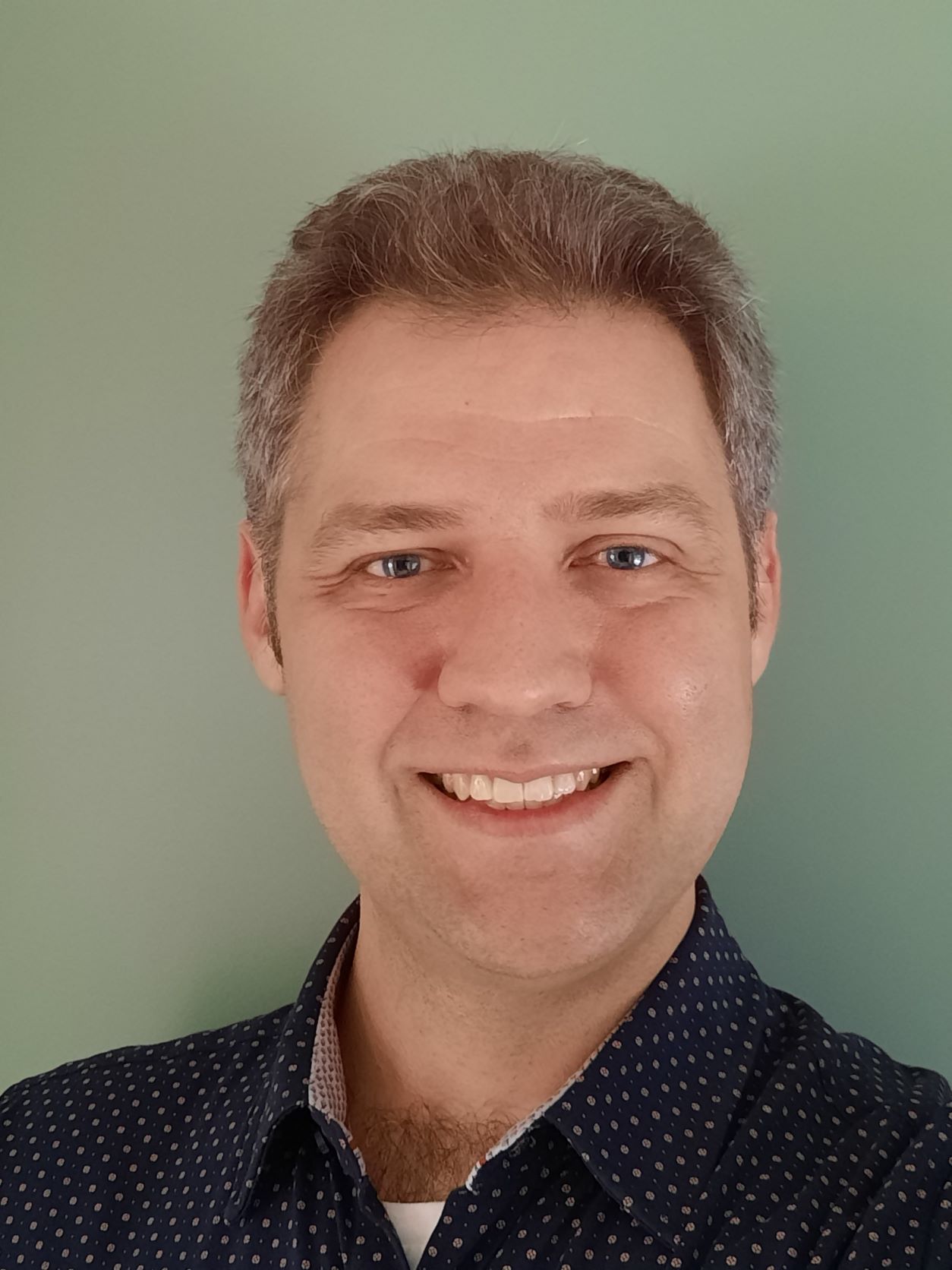
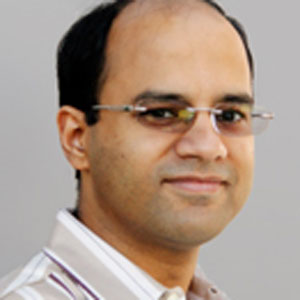
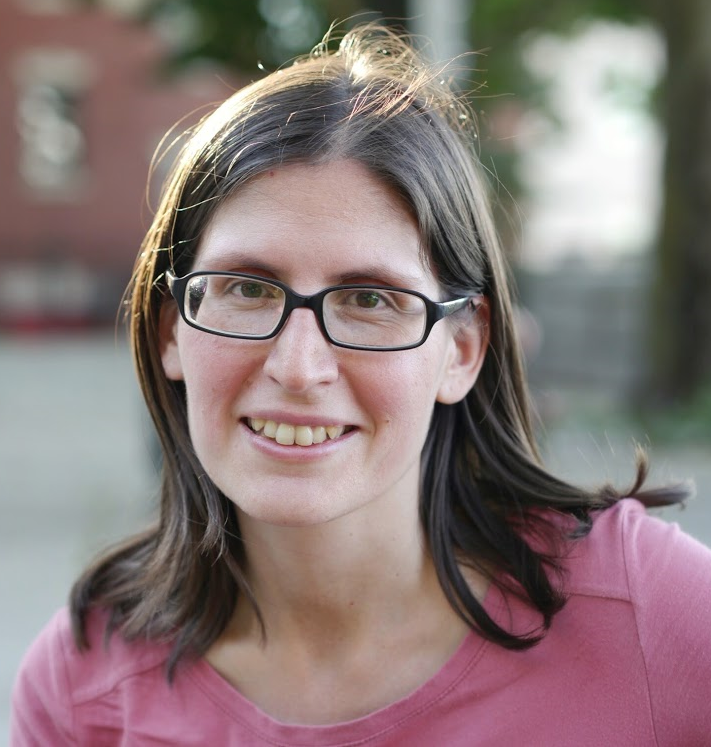
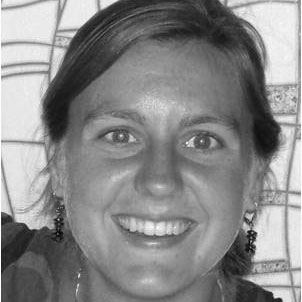
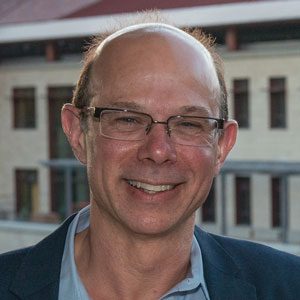
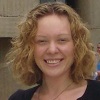
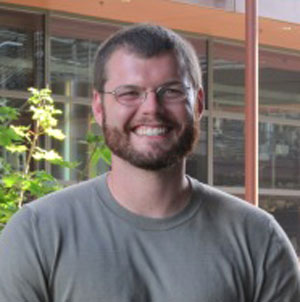
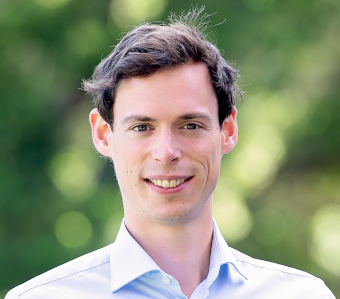
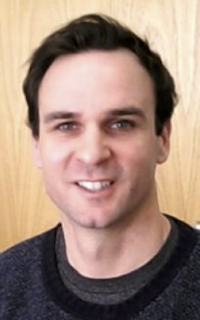
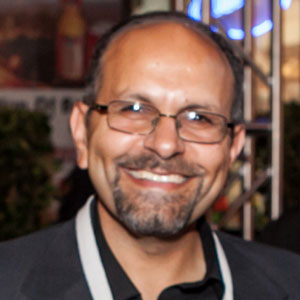
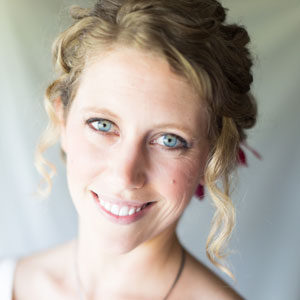

.jpg?version=1&modificationDate=1489508993414&cacheVersion=1&api=v2&width=100&height=150)
